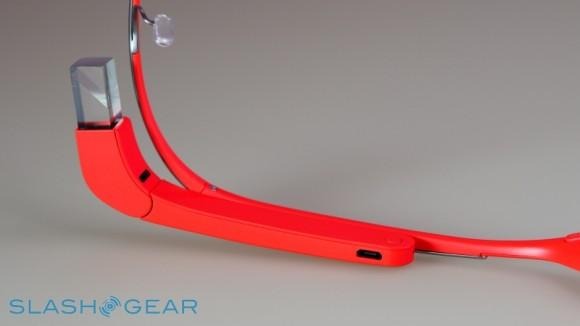Google using $10m quantum computer to understand Glass future
Google has used some of the most advanced computing technology, quantum chips in the D-Wave computer it has bought with NASA, to address one of the most basic issues in its Glass wearable: figuring out if users are blinking on purpose or involuntarily. The perhaps humdrum implementation, revealed for the first time this week in a film about the technology, has seen the quantum computer – which is based at Google's Quantum Artificial Intelligence Lab – bring its ability to examine complex multiples of possibilities effectively simultaneously to bear on refining the algorithms involved in Glass and its non-traditional control systems.
The consumer version of Glass won't actually end up including a quantum processor itself – the chips in the D-Wave computer are maintained at incredibly low temperatures, near absolute zero in fact, which wouldn't be especially practical or comfortable on the face. However, its processing abilities will offer Google a shortcut to figuring out the best way to implement sensors like the blink-detection system in Glass.
Currently, the wearable has an inwardly-facing sensor that is optionally used to spot whether the user is wearing Glass or not. Take it off, and it goes into sleep mode; put it on, and it switches back on.
However, there have been indications that Google wants to use the sensor for more advanced control, such as trigging photos. Tidbits spotted earlier this year in the Glass code covered dormant blink-to-photograph features in the camera, which would allow the wearer to take a photo simply by blinking rather than giving an audio command or pressing the physical button.

Google opted to leave the feature disabled, but a third-party app switched it on. However, it proved easily confused as to what was a purposeful blink and what was merely an autonomic response.
That, says Google, is where the quantum computer comes in. In the film, which will be shown off at the Imagine Science Film Festival on Friday at Google New York, the company's engineers and its NASA technical experts explain the advantages – and challenges – of adopting a new kind of architecture, including figuring out exactly how to best phrase the questions asked of it. That can include everything from the origins of the universe, through to whether someone is trying to discretely trigger a photo of someone on the bus.
The D-Wave computer, first offered commercially back in 2011, eschews the traditional clusters of x86 or ARM processors, using instead what the company calls "Qubits". Each chip has up to 512 Qubits, which can simultaneously encode information at the quantum level as either 0, 1, or both 0 and 1 at the same time; Qubits are connected using Couplers, which push a pair of Qubits to either matching or opposite states, while finally programmable magnetic memory is used to guide the path of the processing.
D-Wave quantum computing:
"We hope it helps researchers construct more efficient, effective models for everything from speech recognition, to web search, to protein folding" Google said back in May, when the purchase of the roughly $10m computer was announced.
"The overwhelmingly obvious killer app for quantum computation is optimization" the team says. In fact, the company's entire existing data center infrastructure couldn't keep up with a quantum computer at crunching vast amounts of data.
Google has previously said that it hopes to launch the consumer version of Glass in 2014, though it has been pushing out firmware updates for its Explorer Edition on a monthly basis, adding new features each time. Most recently, that included public transit directions, though the search giant also recently opened its Glassware review process for third-party developers to submit their apps for the wearable.
VIA The Verge
